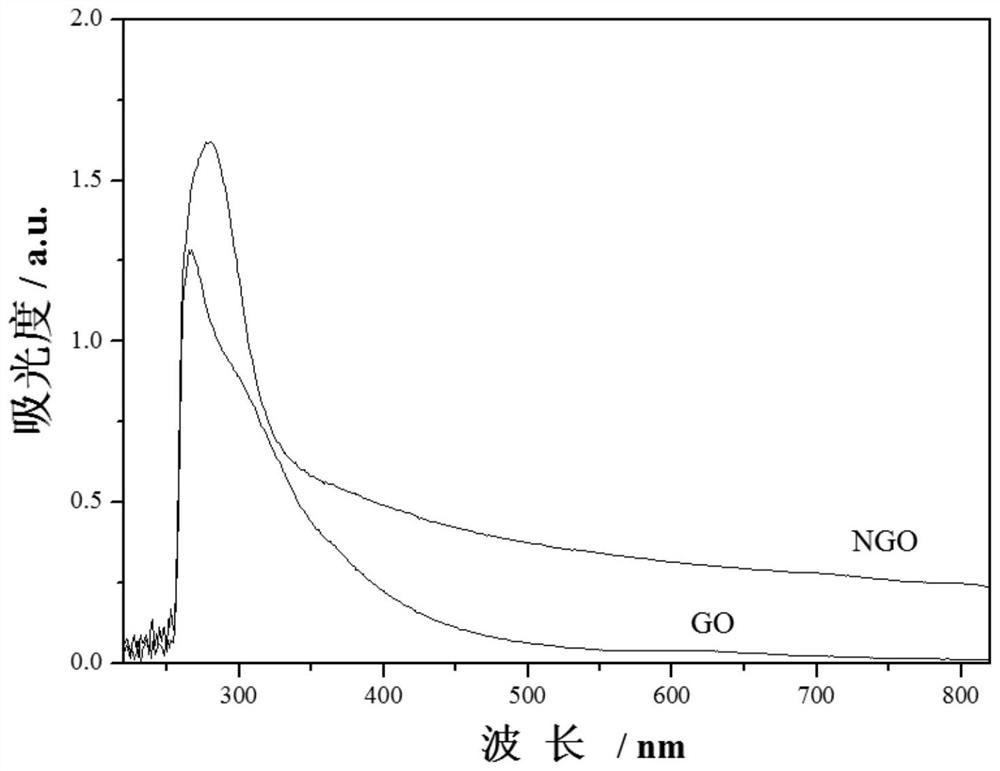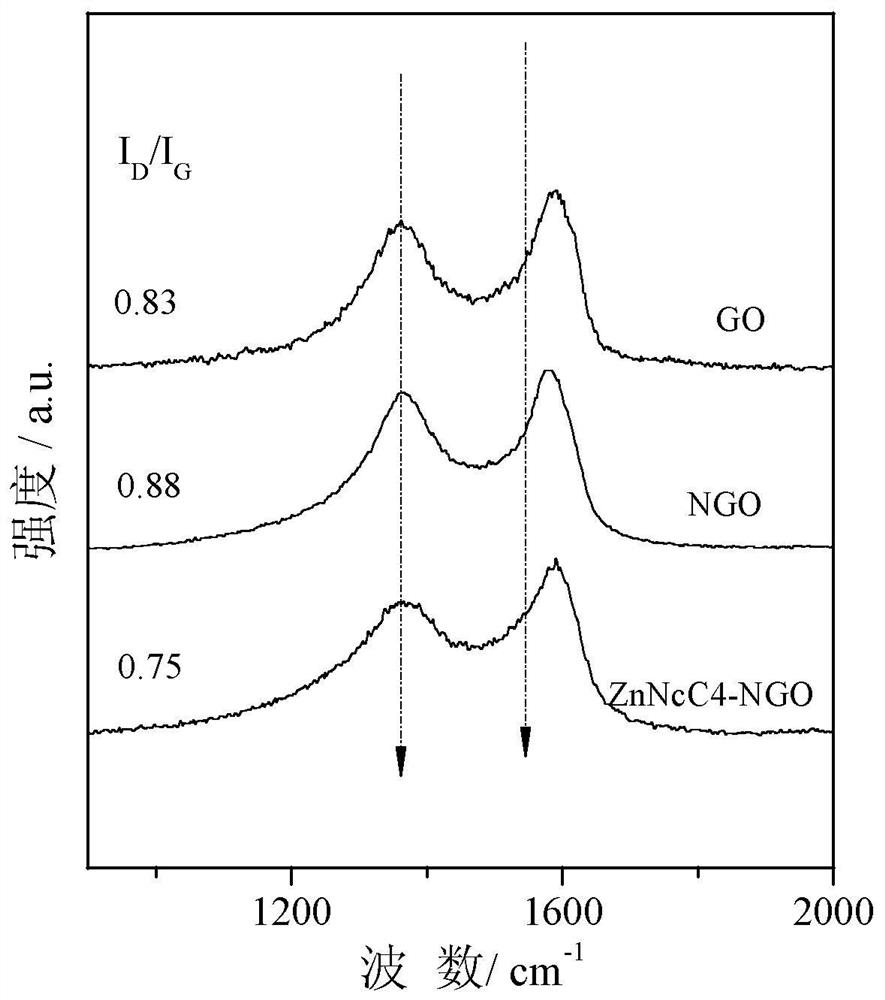Naphthalocyanine-aminated graphene oxide composite nonlinear optical material and preparation method thereof
A graphene composite, nonlinear optics technology, applied in nonlinear optics, organic chemistry methods, optics, etc., can solve problems such as poor third-order nonlinear optics performance
- Summary
- Abstract
- Description
- Claims
- Application Information
AI Technical Summary
Problems solved by technology
Method used
Image
Examples
specific Embodiment approach 1
[0016] Specific embodiment 1: In this embodiment, the composite nonlinear optical material of naphthalocyanine-aminated graphene oxide is formed by covalent bonding of tetracarboxyl metal naphthalocyanine compound and aminated graphene oxide, wherein the tetracarboxyl metal Naphthalocyanine compounds (ZnNcC 4 ) structural formula is:
[0017] In this embodiment, the composite nonlinear optical material of naphthalocyanine-aminated graphene oxide is prepared from tetracarboxyl metal naphthalocyanine compound and aminated graphene oxide, and the synthesized tetracarboxyl metal naphthalocyanine / aminated graphene oxide bond compound (ZnNcC 4 -NGO) structural formula is:
[0018] The laser damage threshold of the naphthalocyanine-aminated graphene oxide composite nonlinear optical material in this embodiment is as high as 1J or more.
specific Embodiment approach 2
[0019] Embodiment 2: This embodiment is different from Embodiment 1 in that the graphene oxide is prepared by the Hummers method.
[0020] In this embodiment, GO is pretreated by introducing ethylenediamine molecules to synthesize aminated graphene oxide (NGO).
specific Embodiment approach 3
[0021] Specific embodiment three: the preparation method of the naphthalocyanine-aminated graphene oxide composite nonlinear optical material in this embodiment is implemented according to the following steps:
[0022] 1. Add 2,3,6-tricyanonaphthalene and metal zinc salt into the reaction flask, then add 1,8-diazabicycloundec-7-ene (DBU) as a catalyst, and use n-pentanol As a reaction solution, heat and reflux for 24 to 36 hours. After the reaction, add acetic acid, cool to room temperature, and centrifuge with methanol to collect the solid phase to obtain the tetracyanometal naphthalocyanine complex [ZnNc(CN) 4 ], tetracyano metal naphthalocyanine complexes [ZnNc(CN) 4 ] mixed with concentrated sulfuric acid with a mass concentration of 45% to 55% for heating and hydrolysis to obtain tetracarboxyl metal naphthalocyanine (ZnNcC 4 );
[0023] Two, with GO and ethylenediamine as reaction raw materials, add dicyclohexylcarbodiimide (DCC) as catalyst, use DMF as reaction solutio...
PUM
 Login to View More
Login to View More Abstract
Description
Claims
Application Information
 Login to View More
Login to View More - R&D
- Intellectual Property
- Life Sciences
- Materials
- Tech Scout
- Unparalleled Data Quality
- Higher Quality Content
- 60% Fewer Hallucinations
Browse by: Latest US Patents, China's latest patents, Technical Efficacy Thesaurus, Application Domain, Technology Topic, Popular Technical Reports.
© 2025 PatSnap. All rights reserved.Legal|Privacy policy|Modern Slavery Act Transparency Statement|Sitemap|About US| Contact US: help@patsnap.com



